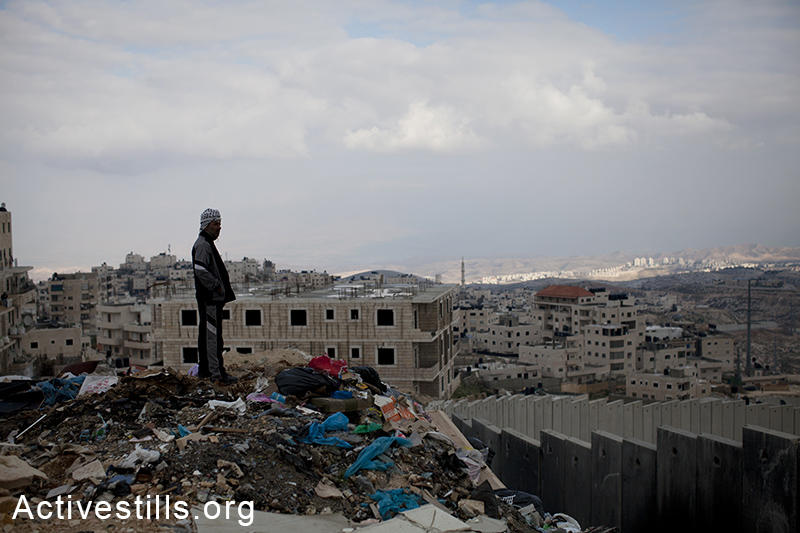The East Jerusalem neighborhoods of Ras Shehada, Ras Khamis, Dahyat A’salam and the Shuafat refugee camp, which are cut off from the rest of the city by the separation wall, have gone without running water since March 4.
Text: Ryan Rodrick Beiler, Photos: Tali Mayer, Keren Manor, Shiraz Grinbaum / Activestills.org
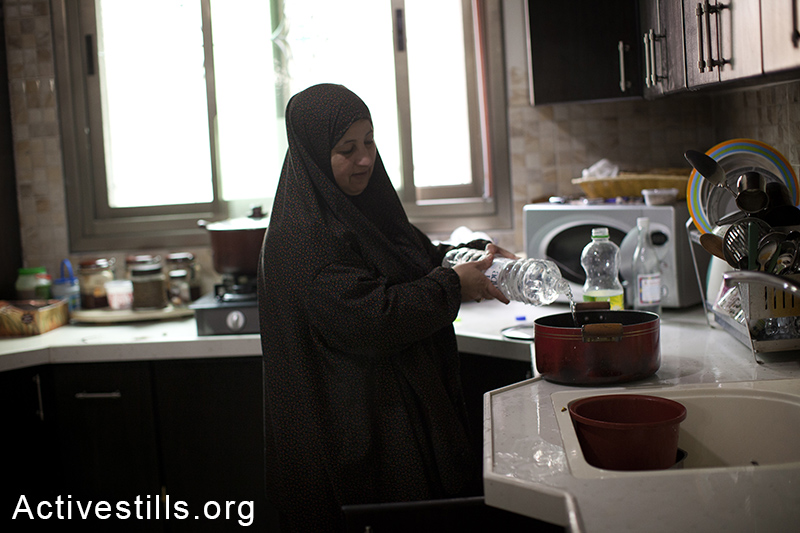
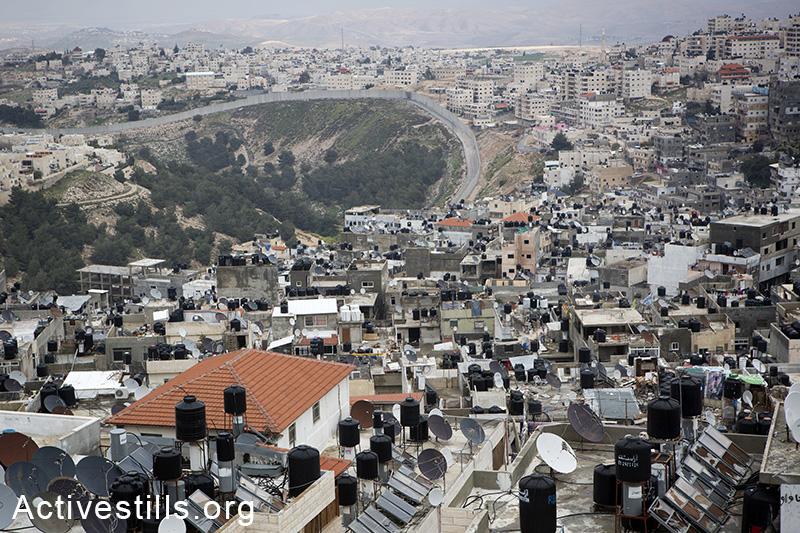
Locals say that Ras Shehada has had problems with water for more than two months, and Ras Khamis for more than 15 days, generally with low pressure and occasional cut-offs, and that this is the worst extended outage that these neighborhoods have ever experienced. With the rooftop reserve tanks now emptied, residents have no choice but to buy water at high prices from local vendors.
Ronit Sela, director of a human rights project in East Jerusalem for the Association for Civil Rights in Israel (ACRI), wrote a letter last week to Infrastructure Minister Silvan Shalom which said, in part:
In a conversation with Mr. Eli Cohen, Associate Director of The Gihon Corporation, the water corporation responsible for supply water to Jerusalem, ACRI was told that the company’s water systems and gauges did not indicate that there was any problem with the water supply to these areas. This however does not change the harsh reality of tens of thousands of people, including infants, children, women and the sick, being left without water. It is essential to remember that the right to water is a fundamental right, the absence of which has serious implications on the right to life and health.
The Gihon Corporation and the Jerusalem Municipality correctly assert that the current water infrastructure in these neighborhoods is insufficient to meet the water demands of the residents. Indeed, this grave situation has been exacerbated in recent years by natural population growth together with the erection of the separation barrier that disconnects them from the rest of the city. It is the responsibility of the Ministry of National Infrastructure to intervene to find an immediate solution to this water shortage and ensure that these residents have access in the long term to a secure water supply.
This week, ACRI is going to the High Court to file an urgent petition on behalf of area residents calling on the National Water Authority and HaGihon to address the problem.

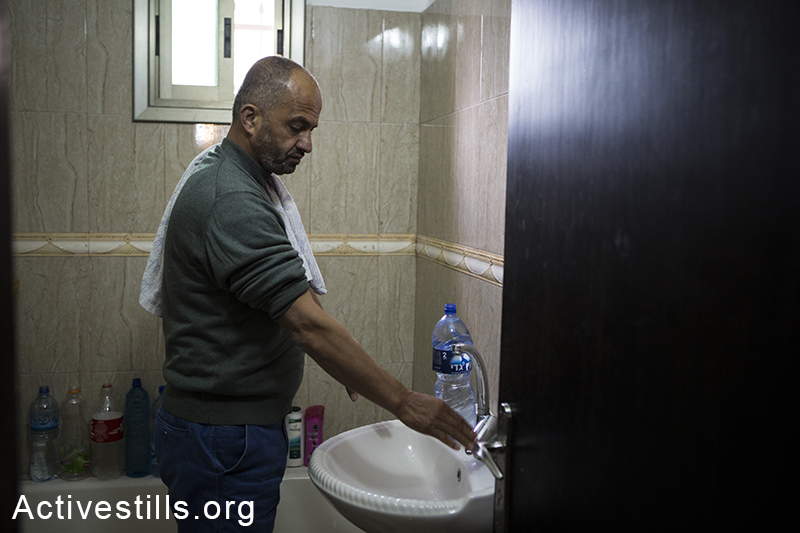
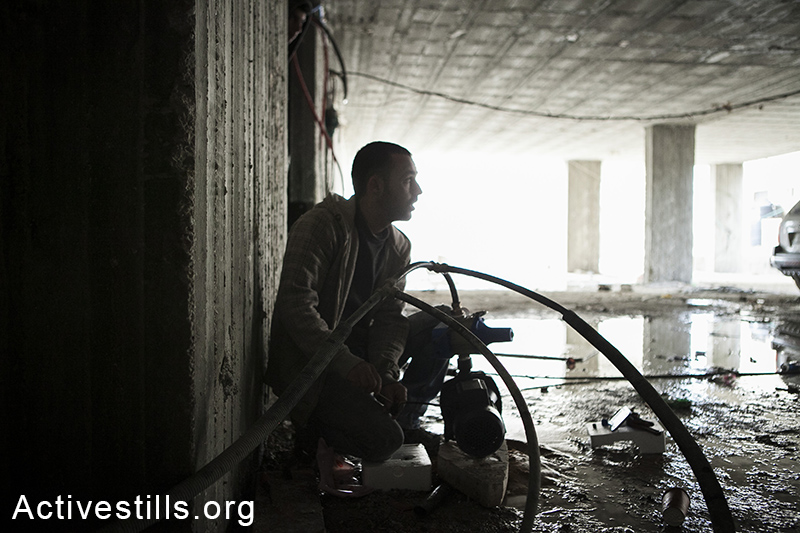
In a statement reported by Haaretz, HaGihon acknowledged that the infrastructure in these neighborhoods is inadequate for the size of the population, but blamed the Water Authority for failing to adequately fund improvement and maintenance. The company’s statement also said that “most of the population in these neighborhoods [tens of thousands of people] are not registered customers of Hagihon but still receive a continuous water supply, out of humanitarian concerns.”
However, though water meters have been installed for some areas or buildings, when residents attempt to register as customers and receive a water meter for their own home, the company refuses to enter the area to install them. This is often true for other services as well. As Haaretz reports, “HaGihon work crews, like other Israeli authorities, do not often venture to the other side of the separation fence, due to security and coordination issues.”
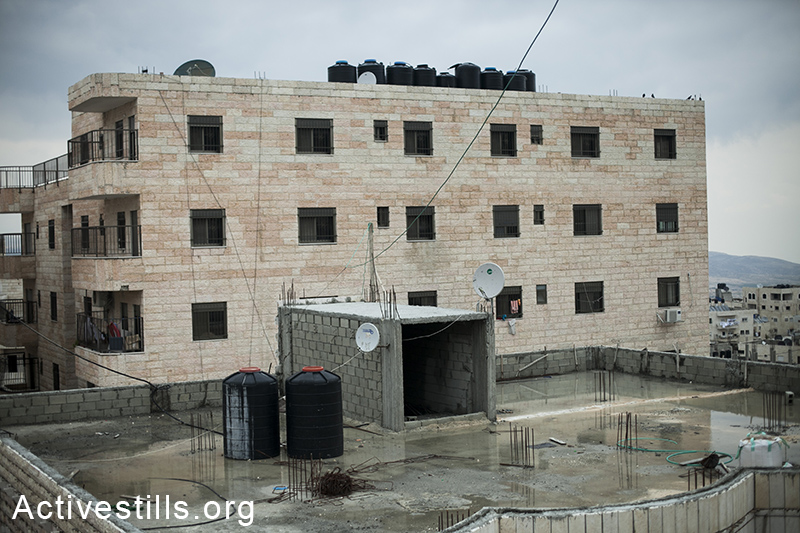
In addition to difficulty with water access, these neighborhoods, where the majority of residents hold Israeli IDs as Jerusalemites, suffer from lack of proper sewage drainage, causing large cesspools to form along the separation wall. Garbage collection is also neglected by the municipality, leading UNRWA to collect trash even outside of its area of responsibility in the adjacent Shuafat Refugee Camp. Residents must rely on volunteer fire fighters, and in the case of medical emergencies are forced to meet ambulances at the Israeli military checkpoint controlling access to the area
As Sela’s letter on behalf of ACRI notes, the neglect of these areas has its roots in the path of the separation wall, and the government’s failure to live up to its obligations:
[T]he approval of the route of the barrier that separates certain neighborhoods in Jerusalem from the rest of the city, obliged a long list of government agencies to employ creative solutions that suit the new reality. Almost a decade has passed since that government decision, yet very little has changed.


